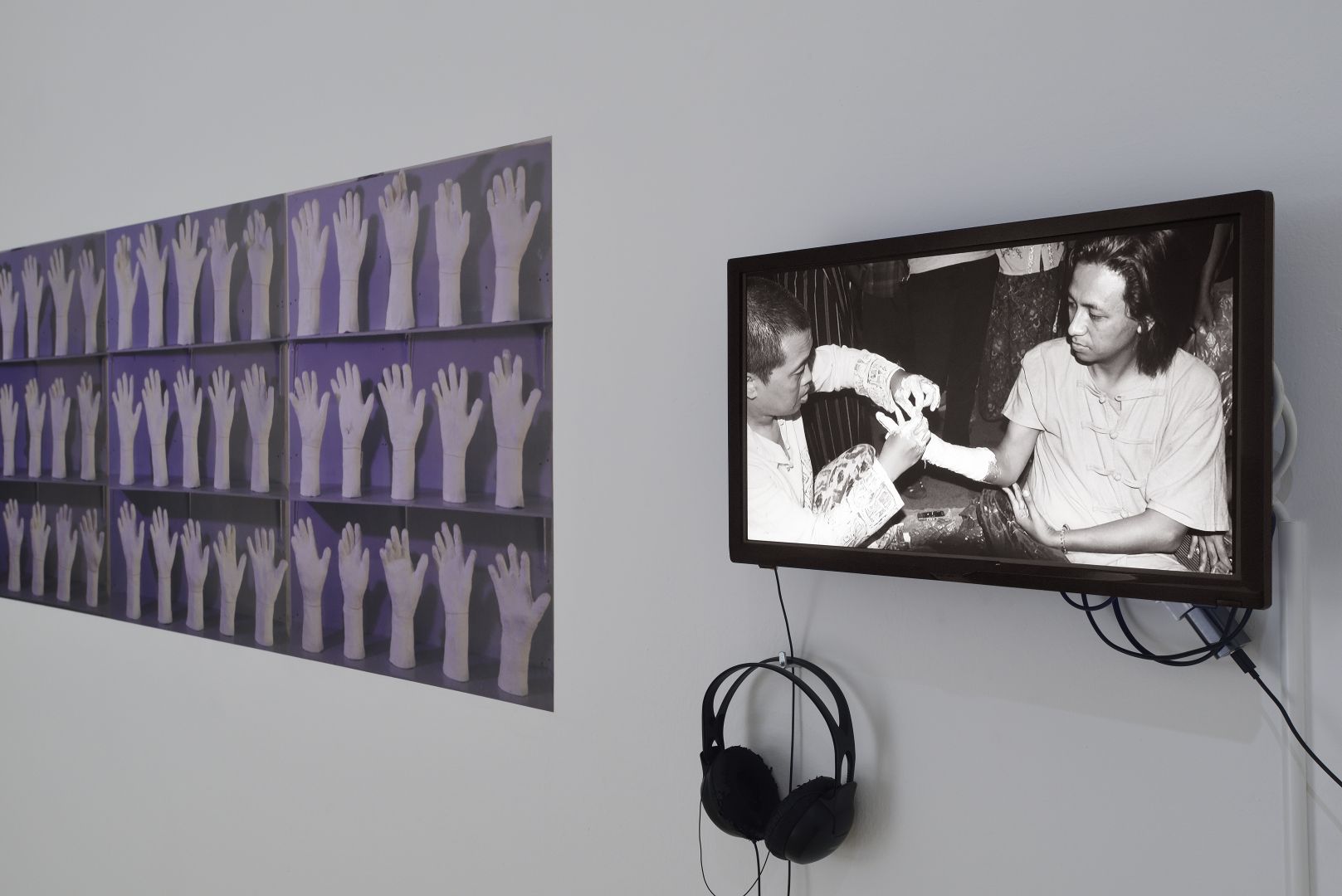HTEIN LIN
A Show of Hands
HTEIN LIN
A Show of Hands, 2012/2013 – ongoing
plaster casts and multimedia
dimensions variable
Courtesy of the artist
Photo: József ROSTA © Ludwig Museum – Museum of Contemporary Art
Htein Lin, who since a young age has had a long and painful experience with the military rule, initiated A Show of Hands aiming to create a visual and symbolic formulation of the atrocities faced by civilians in Myanmar due to censorship. Htein Lin took part in the 8888 Uprising (1988): he was detained in a refugee camp in India for two years; he then escaped, fighting for months as a guerrilla in the jungle, then was captured and tortured. Years after, working again as an artist and actor – originally he was a law student and trained in traditional theatre – officials came to take him away one night in 1998. He was jailed for almost seven years because his name was mentioned in a letter sent by another ’88 protester. Htein Lin, who had never received the letter, strengthened his artistic skills in prison and came back to the scene as a reinforced painter and performance artist. After leaving Myanmar for personal reasons, he returned in 2012/2013 and started his project: A Show of Hands. He decided to give voice (literally and individually) to once jailed political prisoners said to have been at least around 3000 between 1988–2012 only, but that’s probably just an underestimated number. The project still continues with the aim of reaching 1000 individuals: Htein Lin contacts or is contacted by the individuals (from old artist friends to writers, intellectuals...). He sits down with each former prisoner and casts the forearm of the person while talking to him/her and recording their conversation – casting is a symbol of healing. Today he has almost reached 500 casts. As part of Htein Lin’s installation, in this room of the Ludwig Museum, around two hundred plaster hand-casts on the shelves should be representing the thousands of Myanmar civilians who are still behind bars as political prisoners. Arrangements were made earlier this year for the shipment from Yangon, but the state of war since the military coup on 1 February 2021 and the brutal retaliation that continues to this day led the artist, in agreement with the curators, to seek an alternative way of presenting the ongoing project, both for his own safety and for the safety of the material imprints of the “oral archive” that had been under construction for a decade (the hands travelling in the wooden box could easily have been confiscated by the authorities at any point, with inconceivable consequences owing to the theme of the work). The timely political context and the tragic repetition of history (there are more prisoners today than in the last decades combined) prompted the artist to prepare his next performance with a young artist who was released in June 2021 after three months in prison, and to continue the project specifically with regard to the framework of Emplotment (no new casts have been made in the last two years due to the pandemic and the coup). In this way, the five-fingered position of each hand in Htein Lin’s project has been reduced to three fingers in the case of Moe Satt, which is a symbol adopted by the uprising that continues to this day. The performative and performance-based project, which has been developing since 2012/2013, with the material recorded through audio or visual documentation during the individual plaster castings, has a significance far beyond the visual arts scene due to its ‘oral history’ character: in addition to being a resource for future generations, it connects imprisoned contemporaries and creates a singular relationship of mutual trust within the framework of society. In the words of Htein Lin, the most important aspect for him and the community involved in the project is to be able to deepen their maturity as human beings. By engaging the audience to witness these perfomances with the former prisoners, thoughts banned from an official narrative emerge and the perfomative séance becomes a cyclical, living act as continuity is ensured. The artist hence can reach out through his work, basically becoming healer of traumas and binder of communities – art operates as a therapeutic tool.
KÁLMÁN Borbála
